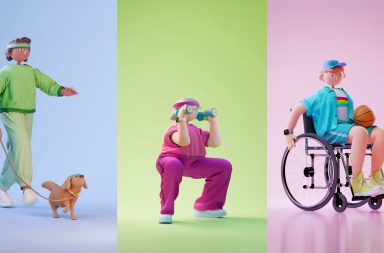Never overlook the power of a good story. This is what people will remember about your work.
Jane Maher, Chief Medical Officer, Macmillan Cancer Support
As long as we’ve had campfires, humans have gathered around them to share stories.
Stories are why we stay up later than we’d planned to finish a book. Or why we binge watch the latest Netflix series. Stories are how we make sense of the world.
And video is one of the most powerful storytelling tools available to us – think of it as the modern day digital campfire. It’s no coincidence that the top 100 global brands each produce around 80 videos a month. They know from experience (and hard statistics) that great video content is crucial to engaging their customers.
Video can be a powerful medium for storytelling and engagement in the health sector.
Health video works
“All right, so here we are in front of the elephants.” With those words, Jawed Karim introduced the first ever YouTube video in 2005. 18 seconds long, this seemingly inconsequential video foretold the future of online media.
Today, YouTube is not only one the most used video-sharing platforms but – more interestingly – it’s the second most used search engine after Google. That statistic tells you something fundamentally important about digital behaviour – people are hungry for information delivered through video. (Jawed Karim had a hunch this was the case – he was a cofounder of YouTube.)
Health videos in particular are popular. And not just popular, but effective:
- Two-thirds of physicians use online videos to keep up to date with clinical information.
- 85% of those physicians are taking action as a result of that video engagement, such as sharing with colleagues or even making treatment decisions.
- On the patient/consumer side, 1 in 3 people watch health-related videos online, and 93% take action as a result.
The gift that keeps on giving
Crucially, video isn’t a one-time wonder. 30% of video views come a year after the video has first been published. This means that video presents a unique opportunity to engage people on an ongoing basis and create longevity in relationships with customers as they consume content over time.
But on the flipside, if you don’t think strategically about video, you could be missing a major opportunity.
Our top 5 video tips
To realise the potential of video for your brand or therapy area, you need to become a master of the digital campfire. Here are some key considerations you need to address before going near a video camera:
Tip 1: Be clear who you’re talking to (and why)
Be laser focussed on defining your target audience and the purpose of your video. This will help inform the overall approach and style – animations, roundtable discussions, documentary-style stories, etc. An internal rep training video is likely to be produced very differently to a disease awareness video for doctors or patients, for instance.
Tip 2: Define your story
Decide from the get-go on what you want your audience to feel or what exact action you want them to take. Video gives you the chance to emotionally connect like no other medium – use it.
Tip 3: Production values matters
We’ve come a long way since those 18 seconds of grainy YouTube video. The age of Netflix has increased expectations of production quality (not to mention quantity). Put simply, if the videos aren’t well produced, no one will watch them.
Tip 4: Talent counts
Many healthcare videos benefit from using a host to facilitate conversations. But nothing says ‘boring video’ more than a boring host. Your host needs to have charisma, a clear understanding of the subject matter and media training.
Tip 5: Think interactivity
Just watching a video isn’t always good enough in the digital age. With HTML5 video, you can overlay contextual overlays that audiences can interact with. And these actions can be measured.
Bonus tip: Respond to your regulatory landscape
Digital solutions such as geo-restricting players or special opt-ins for HCPs can help you navigate the regulatory landscape. Just make sure you think about them early.
The power to connect
Done right, video has the potential to communicate beyond the written word and speak to your audience’s innate appetite for stories and storytelling.
Those who master the digital campfire are those who will most likely succeed in connecting with their audience and inspire action.



